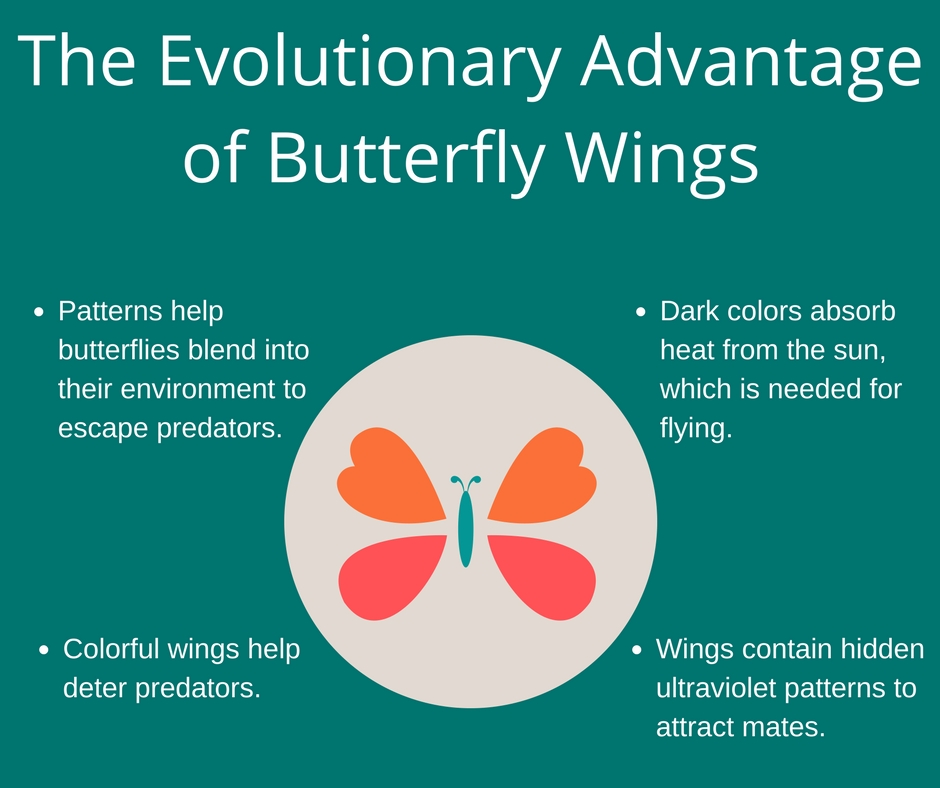From the flower on your front porch to your cousin’s lower back tattoo, butterflies are one of the most immediately recognizable insects due to their magnificent wings. Though I am no butterfly expert myself, I can distinguish a few species native to my area by their color patterns. Interestingly, wing patterns and coloration may be important for speciation and adaptation to environmental stimuli, as in the case of the peppered moth.
During the Industrial Revolution, evolutionary biologists recognized that black peppered moths were much more common in smog-covered environments, while mostly white peppered moths were found in clean, less polluted environments. This was because the black moths were better camouflaged on smog-covered trees, while the white moths were easily picked off by predators. On clean backgrounds, the opposite was true. Today, the peppered moth serves as a textbook example of Darwinian evolution
What the Painted Lady Can Tell Us About RNA
The importance of butterfly wings for survival is clear, but little is currently known about what controls wing patterns. Scientists at Cornell University recently published a study trying to delve into this issue using new molecular biology techniques. Using the Painted Lady butterfly, V. cardui, as a model system, Zhang and colleagues identified genes that were differentially regulated during pupal development using RNA sequencing. RNA sequencing (RNA-seq), unlike DNA sequencing, is a dynamic method used to quantify and compare changes in gene expression by monitoring the level of certain RNAs within cells as they fluctuate to respond to the needs of different environments and developmental stages.
The difficulty lies in teasing out the expression differences that are relevant to the phenotype of interest. Zhang et al. performed RNA sequencing at different stages of pupal development, when the wings are formed, to identify genes that are differentially expressed as candidates for playing a role in wing coloration and patterning. Some of the genes they found seemed especially promising due to previous studies that had already associated them with the development of pigment in other species and were aptly named after colors, including yellow, pale, ebony and black. Altogether, they isolated 27 genes as candidates for controlling
Zhang et al. performed RNA sequencing at different stages of pupal development, when the wings are formed, to identify genes that are differentially expressed as candidates for playing a role in wing coloration and patterning. Some of the genes they found seemed especially promising due to previous studies that had already associated them with the development of pigment in other species and were aptly named after colors, including yellow, pale, ebony and black. Altogether, they isolated 27 genes as candidates for controlling development of the pigment melanin in V. cardui.
Gene Editing to Narrow Down the Possibilities
The authors then used the new gene editing technology, CRISPR-Cas9, to knock out, or inactivate, some of their candidate genes. By creating mutants with different genes inactivated, the authors were able to discern what the genes normally do during wing color development. One mutant, in which the pale gene was knocked out, showed severe defects, including abnormal wing shape and body scales, along with wing color changing from brown to white with a loss of eyespot pigmentation. Other mutants showed similarly striking phenotypes, including hyperpigmentation, abnormal patterning and some pupal lethality. These knockouts helped to confirm that the candidate genes play a role in melanin production and pattern formation in butterfly wings.
The use of RNA sequencing with CRISPR gene editing may prove extremely valuable not only for understanding the genetic basis of melanin formation in butterflies, but also for biomedical researchers. RNA sequencing is rarely used a primary diagnostic tool but recently has been used when other genome sequencing methods fail to explain the cause of undiagnosed genetic diseases. Functional validation using CRISPR gene editing can help to confirm RNA-seq results and provide further proof of the candidate variant’s impact on patients. Zhang’s method may have a butterfly effect, if you will, for many researchers.
References:
Zhang et al., 2017 Genetics
Cummings et al., 2016 BioRXiV
Related Content
- Read Fundamentals to follow the latest in basic science research at Johns Hopkins.
- Learn more about the genetics research labs at Johns Hopkins Medicine.
- Watch: Our Discoveries for a Better Tomorrow video series highlights on Hopkins genetics researchers.

真是时光荏苒!
Comments are closed.